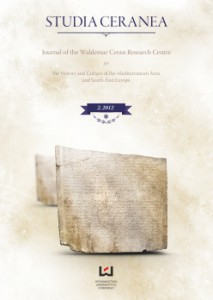The Church of Divine Wisdom or of Christ – the Incarnate Logos? Dedication of Hagia Sophia in Constantinople in the Light of Byzantine Sources...
The Church of Divine Wisdom or of Christ – the Incarnate Logos? Dedication of Hagia Sophia in Constantinople in the Light of Byzantine Sources...
Author(s): Zofia A. BrzozowskaSubject(s): Cultural history
Published by: Wydawnictwo Uniwersytetu Łódzkiego
Summary/Abstract: The article attempts to answer the question of how the name of the most important Byzantine church of Constantinople, the basilica of Hagia Sophia, built in the mid-4th cent., and then rebuilt during the reign of Justinian the Great was understood and interpreted. The problem has been presented on the basis of the views of Byzantine writers from the 5th to the 14th cent. (Socrates Scholasticus, Procopius of Caesarea, Paul the Silentiary, John Zonaras, George Pachymeres, Patriarch Callistus I). The analysis of the above sources allows an assumption that according to the Byzantines themselves the Constantinopolitan cathedral was dedicated to the Divine Wisdom, commonly identified with Christ, the Incarnate Word. The evidence supporting this thesis has been provided by both iconography (e.g. the mosaic from the turn of the 9th and 10th cent. from the tympanum over the main entrance from the narthex to nave of Hagia Sophia, depicting Christ the Pantocrator) and the liturgical practice of the basilica, which can now be reconstructed on the basis of the temple typicons, preserved until today. The final part of the article names some other churches dedicated to the Divine Wisdom, built in the area of the Byzantine ecumene (Ephesus, Jerusalem, Thessalonica, Nicaea, Edessa, Trebizond, Mistra, Arta, Benevento, Nicosia on Cyprus, Serdica (Sofia), Ohrid, Sliven, Kiev, Novgorod the Great and Polotsk).
- Issue Year: 2012
- Issue No: 2
- Page Range: 85-96
- Page Count: 12
- Language: English

